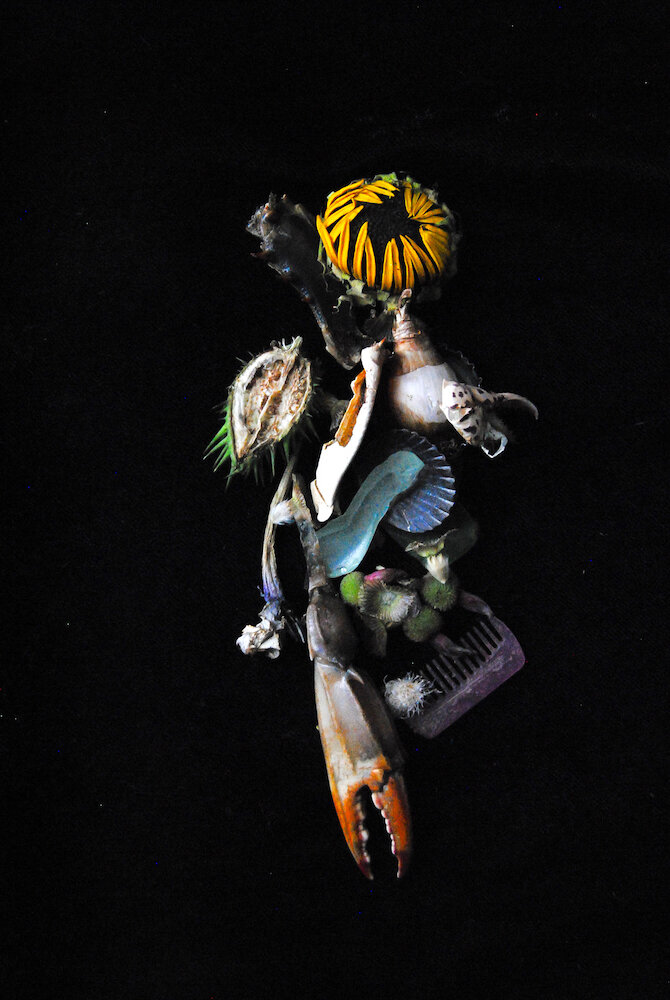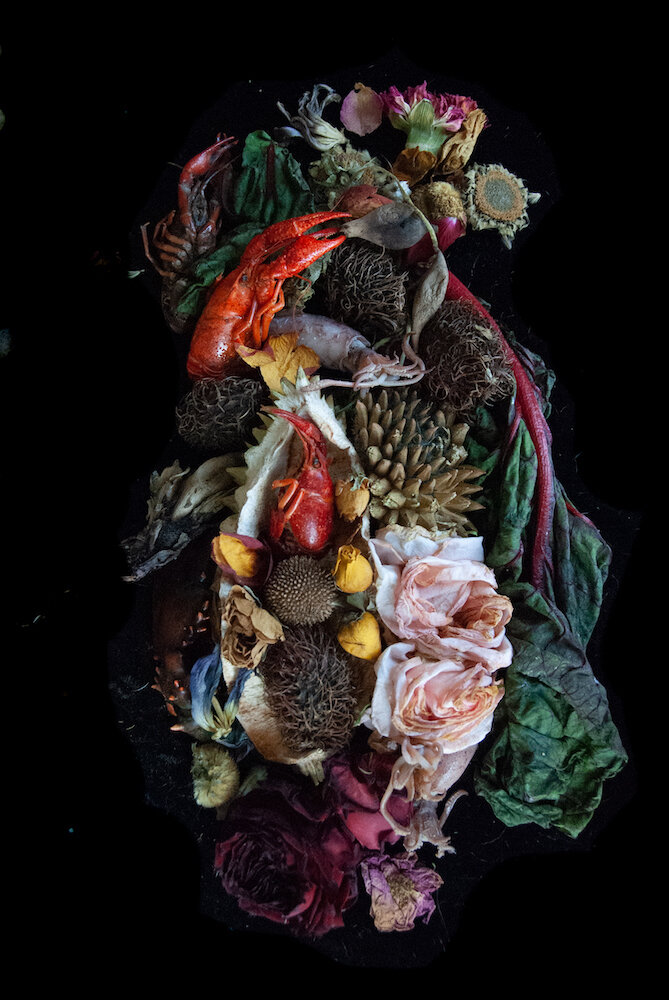An Eye for Decay: Nancy Oliveri
Still Life © Nancy Oliveri
By Micaela Bahn
The still-life provides a vast field for experimentation in how we relate to the world through objects. One of the genre’s most common subjects – plants – are treated as though they exists in a liminal space between inanimate things and breathing creatures, and this allows them to provide a distanced metaphor for our own mortality. But when an artist introduces once-sentient beings, such as bits of sea creatures, the distance between us and the subject shrinks a little.
Nancy Oliveri’s images of degenerating organic matter can initially jar the viewer and produce the customary memento mori emotional reflection – melancholy and the transience of life – but the composition of her subjects and the care with which she handles them opens up the idea of what a still-life can be. Oliveri has an eye for decay, a critical skill that pervades the history of still-life painting and photography. The composition and lighting of 17th Century Dutch and Flemish still-life paintings provide the inspiration for her series of images that feature dead wildlife, industrial debris, and flowers.
Still Life © Nancy Oliveri
The spectacular color and textures of her deteriorating objects elicit the sensation of something alive and dead at the same time. Take, for example, her image of tangled flower vines that wrap around shells, dry sunflowers, and a large crab that peeks out from behind a leaf. The depth of the greens and the furtive creature leave the photograph with an illusion of vibrant life. But then you see some leaves curl pine-dark into the abyss below. Flower petals fold shut one last time around their buds. The crab’s claw floats unnaturally far from its owner. The viewer comes to see that the shadow that separates life and death appears less distinct.
Still Life © Nancy Oliveri
In another image, a discarded purple comb floats amongst similarly colorful objects – a bright orange-tipped claw, a ribbed blue shell, a lime green spiked fruit. Their pairing feels almost natural, though we know something should not belong. The image calls to question how these particular found objects ended up together. The dirty comb in the background suddenly casts the organic materials in a new light, as one type of object will continue to decompose and the others will not. The image immortalizes our discarded waste and conveys the ache Oliveri has expressed for the environment in her other Canal photographs.
The Heart © Nancy Oliveri
The image “The Heart” recently came in 2nd place in the N.Y. Photo Curator Global Photography awards. Intricately arranged, her full-bodied peonies give weight to the bottom of the composition, and their soft bloom juxtaposes the squids that twist about above. There is a fairytale quality to decayed blossoms and sea creatures and perhaps a bit of narrative mystery. The idiosyncratic collection has an unexpected casual elegance, which is exhibited again in her photograph of garlic and shells. As with “The Heart,” Oliveri conveys a deep understanding of color and form in this simpler arrangement. But rather than replicating the vibrance of the previous images, she balances objects that are drained of color. In doing so, the artist creates a compelling canvas in which time feels palpable yet is also brought to a dry halt.
Part of the challenge of a still-life is to animate the inanimate and imbue collective significance to a series of signs that often times appear disconnected. Oliveri’s photographs communicate these qualities without ever instructing us exactly how to feel. Her images feel like a series of curious and luminous offerings made for the viewer to explore.
Nancy Oliveri is a New York based photographer and psychotherapist. She attended the Hartford School and has self-published seven photography books.












